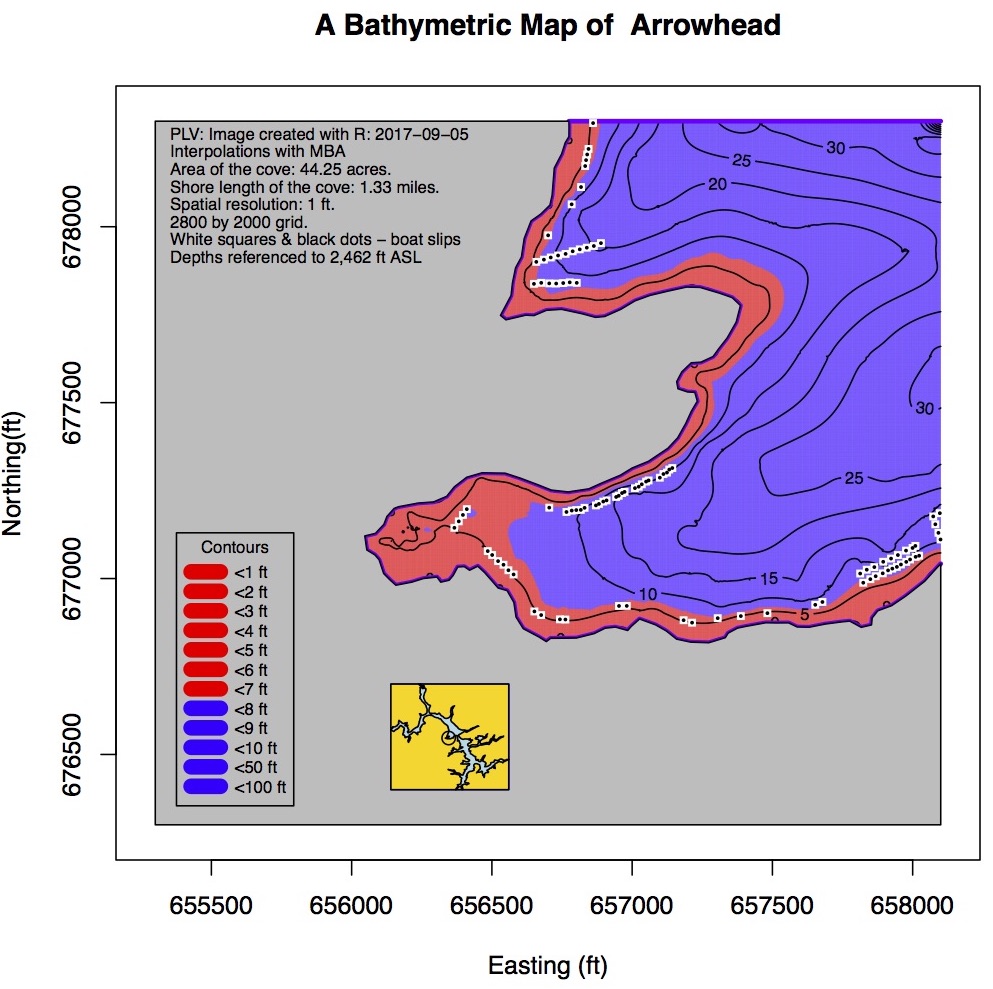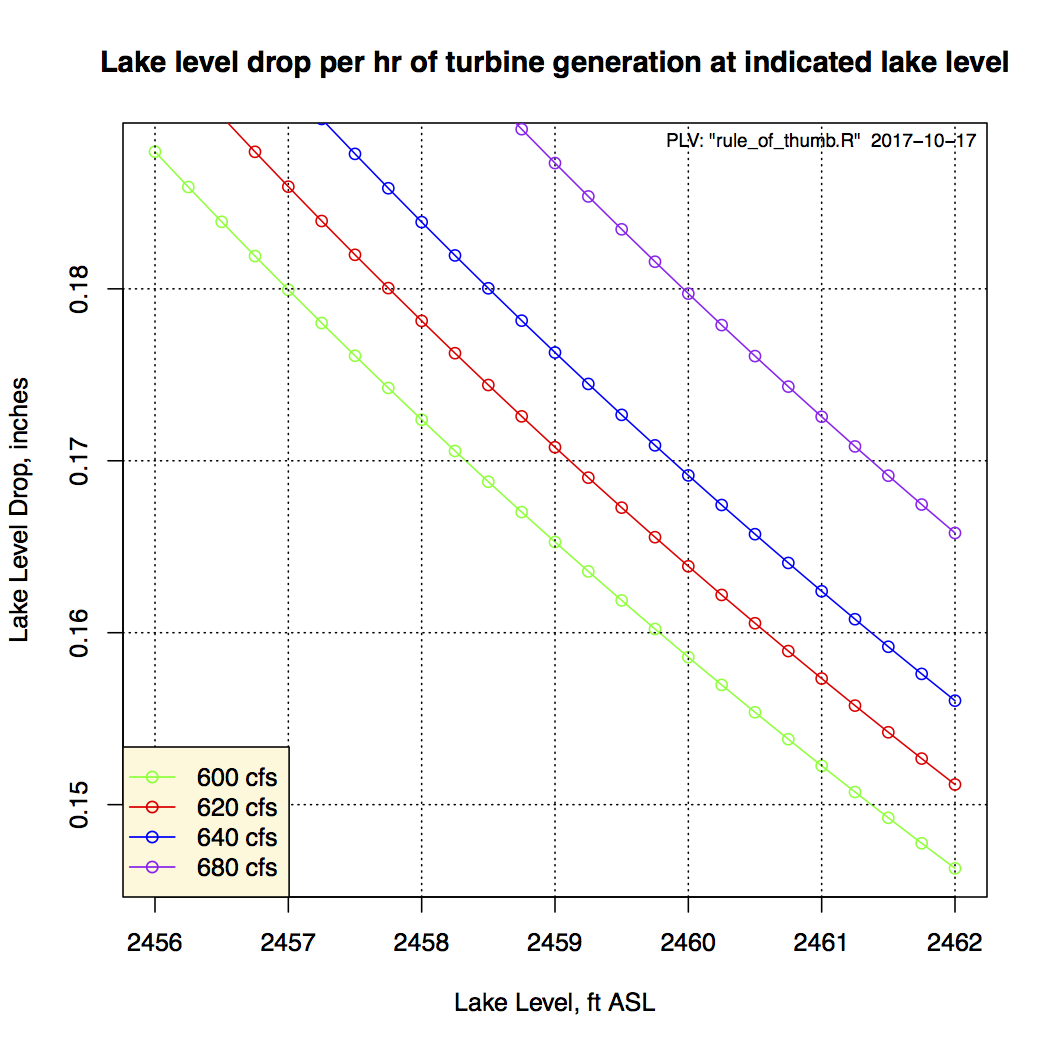
A Summary of my Work on the Permit Issue
(Note that this is a work in progress and the write-up to support the conclusions are spread over many notes on this website, which will be referenced to when it crosses my mind.)
The current “water appropriations and use permit” that the Deep Creek Hydro Project, owned and operated by Brookfield Inc., is coming up for renewal in April of 2019. Permit # GA1992S009 (08)", which is version 8, is the current valid permit, from hereon called the Permit. The language in the permit talks about the privileges of white water rafters and fisheries, but never mentions the property owners around Deep Creek Lake, who, by far, have a much greater contribution to the economy of Garrett County. It seems only fair that this imbalance must be addressed in a more equitable way.
As a result of various kinds of analyses the following is proposed:
1. Extend the lower rule band from the end of July to the end of August and from there let it fall down in a straight line to the beginning of December. This would extend the boating season for many people at the Southern end of the lake.
2. The upper rule band from the months of September through the following year April can be held at 2460 ft ASL. This will provide plenty of potential water storage capability while minimizing shoreline erosion.
3. Under no circumstances shall the lower rule band be violated. Should water levels predicted to go below the lower rule band based on anticipated commitments for white-water uses, white-water releases should be suspended.
4. TER releases should be eliminated. The minimal fishing that occurs in the Youghiogheny River from the tail race to the Sang Run River bridge does not warrant the complexities and unreliability of the current TER protocol and the cost of stocking fingerlings in this part of the river. If drought conditions occur, they would have also been present prior to the formation of the lake. Fish will survive.
5. Make the mandatory schedule for white water releases an optional schedule to be used with a water allocation methodology (WAM). It is anticipated that more white water releases can be scheduled in a more predictive manner.
6. The permit should contain language that the property owners around the lake have a significant say in the operating parameters of the permit.
7. The permit should be made reviewable every three years, and renewable every 10 or 20.
1.0 Introduction
The current “water appropriations and use permit” that the Deep Creek Hydro Project, currently owned and operated by Brookfield Inc., is coming up for renewal in 2019. Permit # GA1992S009 (08)", which is version 8, is the current valid permit. The language in the permit talks about the privileges of white water rafters and fisheries, but never mentions the property owners around Deep Creek Lake, who, by far, have a much greater contribution to the economy of Garrett County. It seems only fair that this imbalance must be addressed in a more equitable way.
My credentials for attacking this problem in a scientific, unbiased way can be found here.
I have addressed Deep Creek Lake environmental issues since 2000 and have spent a considerable part of my retired life studying them.
This has lead to me developing four websites which I more or less continue to maintain:
1. deepcreekanswers.com This was in response to the Monday SPORE luncheons at which all kinds of issues about Deep Creek Lake were discussed. Often they were followed by some calculational support or data collection. The highlight of this website are the bathymetric maps for nearly 30 coves and making available in one place all of the Deep Creek Lake buy-down maps.
2. deepcreekwatershed.org This was in response to attempting to catalog the many documents that were used in developing the Deep Creek Watershed Management Plan. The document are organized by the four subcommittees that were doing the work, but can also be queried via a search criteria across all documents on file.
3. deepcreekscience.com This was in response to me collecting a lot of data about Deep Creek Lake and having no way to readily share the information. Much of this data is extracted from Deep Creek Hydro Project annual reports, USGS gages on the Youghiogheny river, and weather data from various stations around the area.
4. senstech.com This is in response to the desire to document in detail the various technical analyses involving Deep Creek Lake, Youghiogheny River and weather station data. The primary driver is to do analyses to support arguments to change the Permit conditions in 2019. In addition to the data, the code used to do the analyses is generally made available also.
2.0 The Approach
The approach to developing recommendations for changes to the Permit is to examine in a scientific way the various factors that were introduced in the permit conditions. By examining their scientific basis and historical influences one hopes that a reasonable conclusion can be made on a proposed change.
The following factors have been identified requiring careful consideration:
1. The lower rule-band
2. The upper rule-band
3. Operation strategies
4. Temperature Enhancement Releases (TERs)
5. Miscellaneous
In all of our considerations, we’re sensitive to:
1. The fact that Brookfield needs to operate as often as possible to bring in revenue.
2. That white-water rafters have sufficient water flow to be able to navigate the Youghiogheny river from the tail-race to Sang Run.
3. That native fish can survive the warmer weathers.
3.0 The Permit Issues.
3.0.1 The Lower Rule Band
Although the permit does not mention anywhere the rights of the lake property owners, the upper and lower rule are implicitly designed for boating conditions on the lake itself. Unfortunately, the lower rule band is allowed to be transgressed for conditions in the Youghiogheny River benefitting the fishing and the white-water communities. For residences that are in Southern Coves and at the end of most coves in the lake an announced drop in water level can cause boats to become stranded in mud. This may result in damaged equipment and a cost to the owner for having to hire someone to pull the stranded boat back to deeper waters.
As an example, consider Arrowhead Cove, shown in Figure 1. The bathymetry is on the same basis as that which has been reported on deepcreekanswers.com. Only the color scheme of constant depth lines have changed.

Figure 1. Arrowhead Cove Bathymetry.
The figure shows quite a few boat slips in the ‘red’ area. What does this mean?
The red area is 7 ft, or less, below the 2462 ft level. A typical pontoon boat has about a 18-inch draft with no-one steering it and no extra payload. One can clearly see that there are a lot of boat slips located at the 5 ft contour line. These are true locations of the boat slips, not an assumed location. The locations were digitized from a Google Earth map.
The 5-ft contour line will be the shoreline at 2462 - 5 = 2457 ft ASL. Add to that the draft of a boat, about 22-inches for a pontoon boat and 37.5-Inches for a typical power boat, that means these boats should be moved when the water level is 2459 ft and 2460.5 ft respectively. The highest lower rule band value is 2460 during the month of June.
The actual water levels during the summer months is typically held higher than these, leaving it often at 2461 ft.
So how sensitive are we with respect the how fast the lake level can drop when Deep Creek Hydro is operating?
Consider Figure 2. It shows how the water depth changes when the generators are running for one hour when the lake level is at a certain level. It should be noted that the water consumption by the turbine-generators.

Figure 2. Lake Level Drop from Generators Running for One Hour at a Given Lake Level.
The graphs shows results for four assumed water consumption rates by the hydro-electric turbine systems as is reported in various reports. So at a lake level of 2459 ft, and assuming the highest water consumption, the generators must run for a total duration of 6 / 0.188 = 31.9 hours for the lake level to drop 6 inches.
At an average power plant operating duration of two hours per day, that would mean the owner had to be absent for 31.9 / 2 = 16 continuous days, thereby concluding that finding a grounded boat on the next visit would not be an unusual circumstance.
PLV
First Published: 2017-11-05
Adapted for this website: 01/14/2018